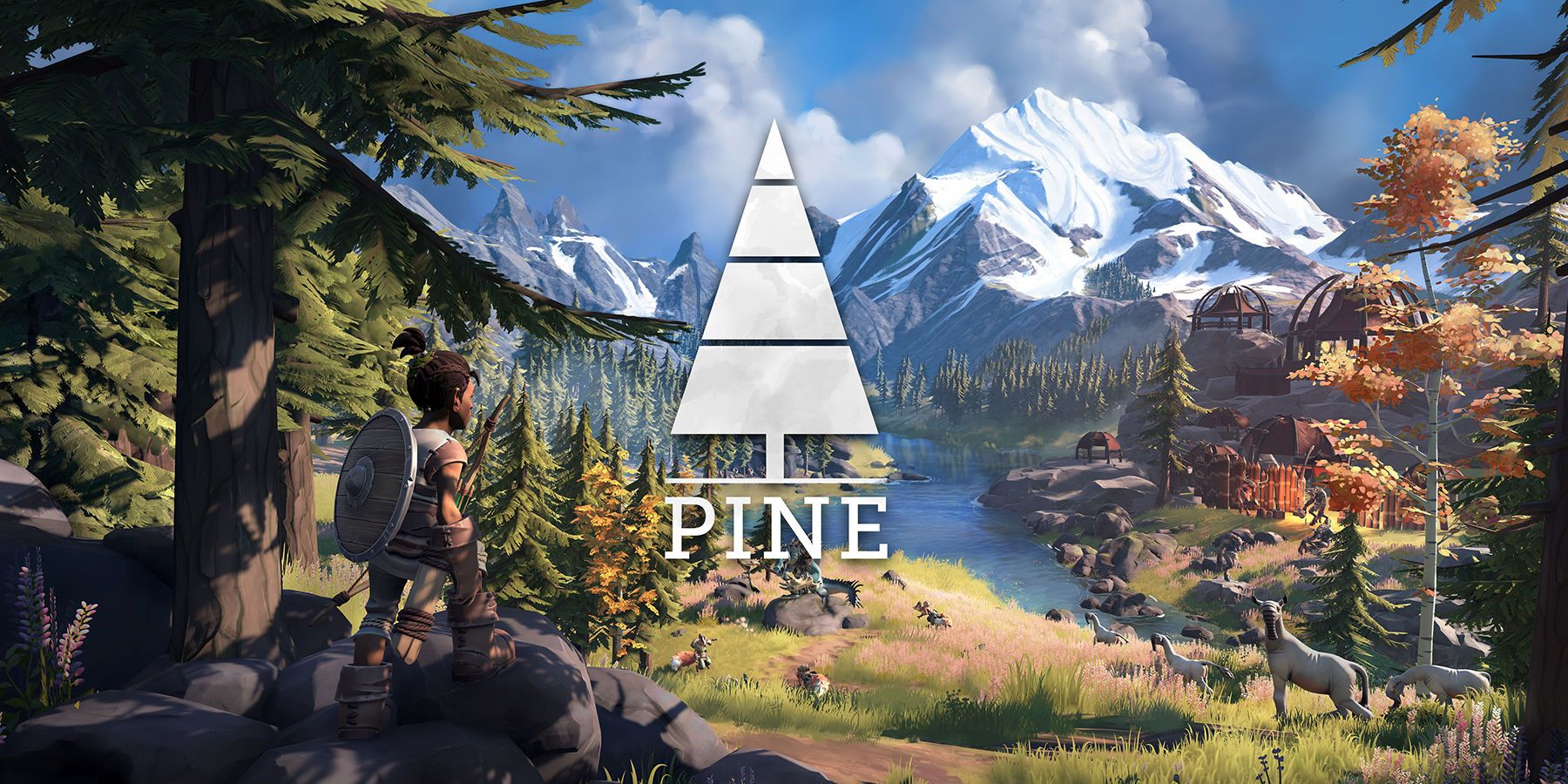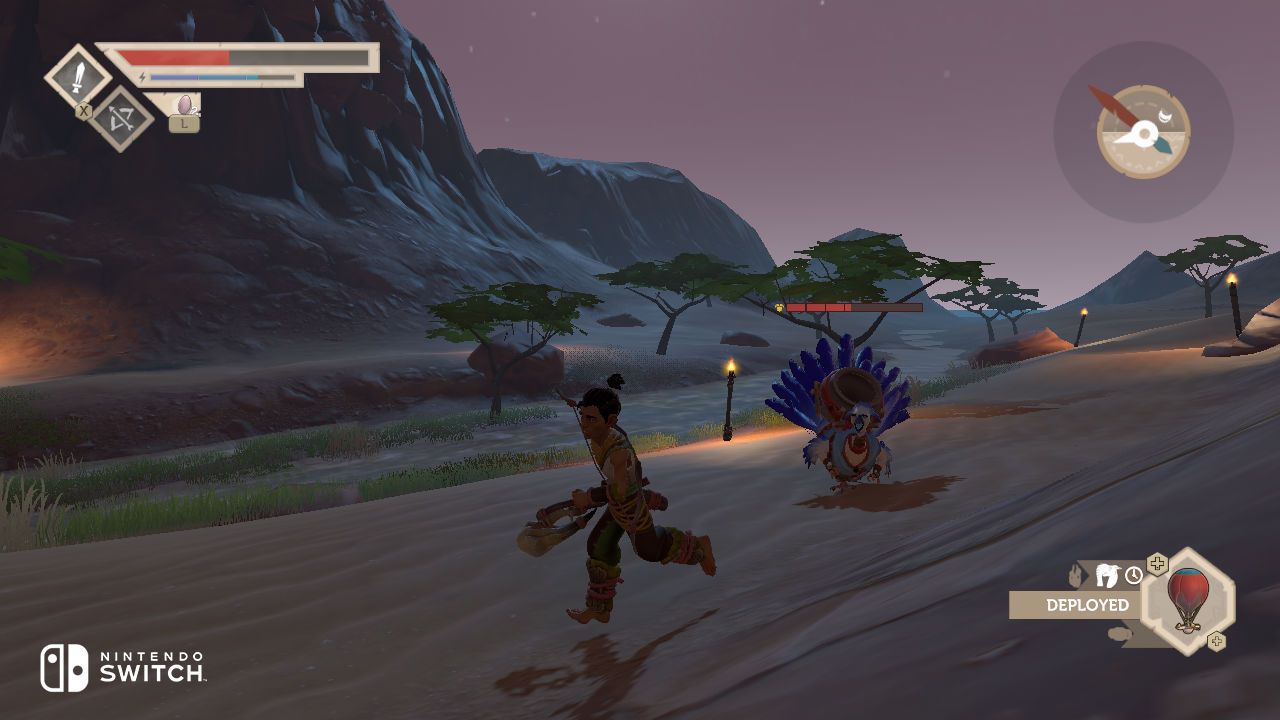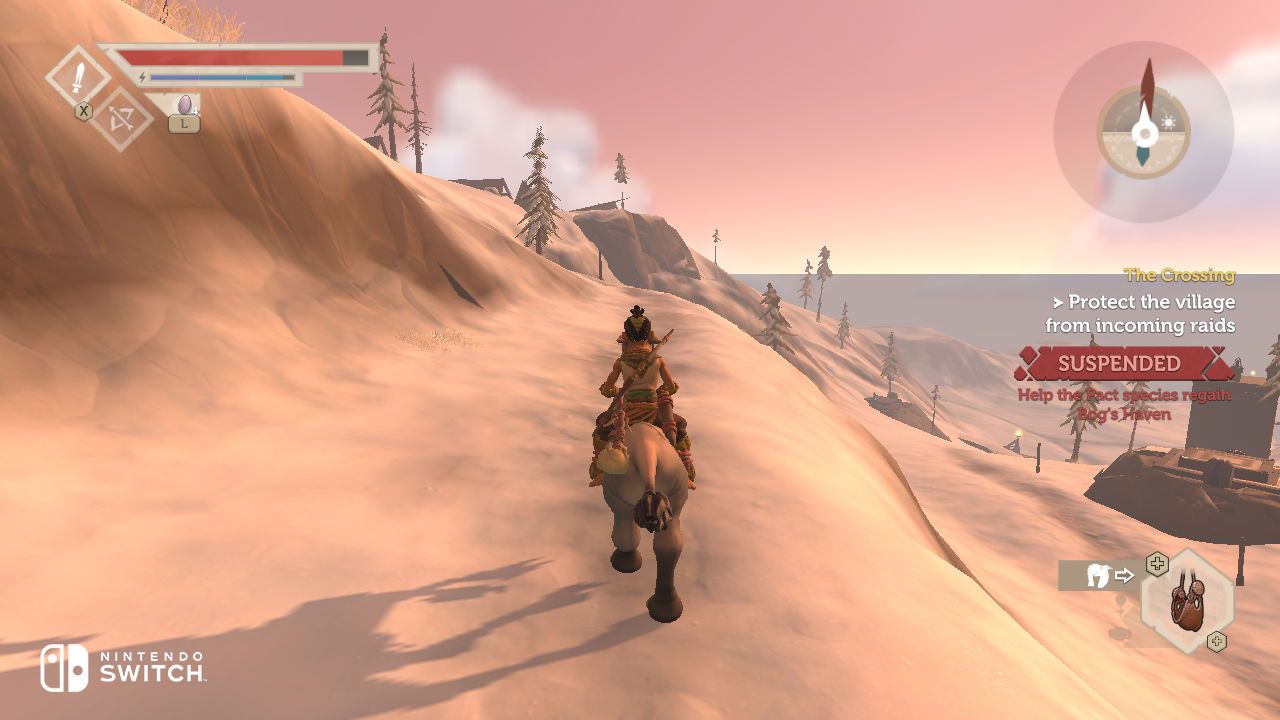Pine’s interesting diplomacy system can’t save it from its dull combat, repetitive quests, and severe technical problems.
On paper, Pine looks like an interesting twist on a successful formula. The action-adventure game puts players in a world where humans are far from the dominant species, but instead of trying to conquer an untamed land, they need to forge alliances with their neighbors to survive. While its diplomacy system does stand out, it’s not enough to make up for the frustrating combat and crafting, and it’s completely overshadowed by the Switch version’s disastrous performance problems.
The humans in Pine live isolated from the rest of the world in a clifftop village, but when calamity strikes, the player character, Hue, sets out to find a new home for his people. That’s when he comes into contact with the various tribes of anthropomorphic animals that populate the rest of the world, starting with a friendly, albeit condescending, teddy bear. Players quickly learn how to befriend these tribes - namely, through bribery - and set out to gain allies that will help the comparatively weak humans find a foothold.
Pine’s complex system of alliances is by far its best feature. Every species has an affinity level not only with the player, but also with every other species. Befriending or hampering members of one village can ripple out to affect relations across the entire map. At first, interactions with different species are pretty basic, limited mostly to attacking NPCs or donating items to a village, but as the game goes on, more options open up. Eventually, the player will be able to help other species develop better armor and weapons, grow their population, and even raid enemy villages. There’s not much practical difference between allying with one species or another, but it leads to a genuine sense of camaraderie with friendly tribes.
Even when the player isn’t directly interfering, species’ relationships with each other will change based on their interactions. What first looks like affinity scores arbitrarily being raised and lowered turns out to be the result of genuine NPC exchanges. Out in the world, the player will come across members of different factions fighting or trading with each other, and these encounters change how their tribes feel about each other. Gatherers sent out by each village actually scavenge for the same resources that players collect. The way that NPCs interact with each other and the world might be limited, but competing for resources with them and watching new technology spread from village to village is impressive from a design perspective and really helps bring the game’s world to life.
Unfortunately, the rest of the game doesn’t hold up to its excellent premise. In practice, most of the player’s time is spent fighting and gathering thanks to unimaginative quests. No matter what the next goal is in the game, it usually boils down to gathering enough of one resource or another and bringing it to one of the tribes. Players may find themselves needing to become friendly with species that hate them or sabotage relationships with allies to progress, and changing a species’ affinity takes more effort as the game goes on, which just means more time gathering resources.
When it comes time to fight, Pine just can’t hold its own. There are plenty of games that do combat worse, but fights in Pine are still dull and repetitive. Enemies hit hard and often much faster than Hue, so most of the player’s time in combat is spent waiting for them to attack to open the window for a counter. Enemies’ movements can also be erratic and hit detection feels unreliable, so hits that seem like they should connect often leave Hue swinging at air.
Even these problems might leave Pine at least worth a look if it weren’t for its atrocious performance on the Switch. Despite some decent art direction, the world of Pine looks terrible, due to jagged models and muddy textures on its terrain and foliage. Its frame rate is unstable, frequently dropping to the speed of a flipbook and hitching far too often. By far the worst problem is that terrain, items, and enemies regularly pop in and out just feet from the player. That might mean an enemy blinking out of existence mid-combat, a rock trapping the player as it loads in on top of them, and even entire towns slowly appearing and disappearing around the player. In a game dominated by gathering, it also means frequently missing the resources needed to progress just because they haven’t loaded in yet.
Pine has a few core ideas so interesting that they mostly make up for its lackluster combat and dull quests. Even its best aspects are limited, though, and nothing would make up for the glaring technical issues that render it borderline unplayable at times. Despite the Switch port being delayed, it clearly wasn’t even close to ready for launch.
Pine is available now for Nintendo Switch and PC. Screen Rant was provided with a digital Switch copy for the purpose of this review.



